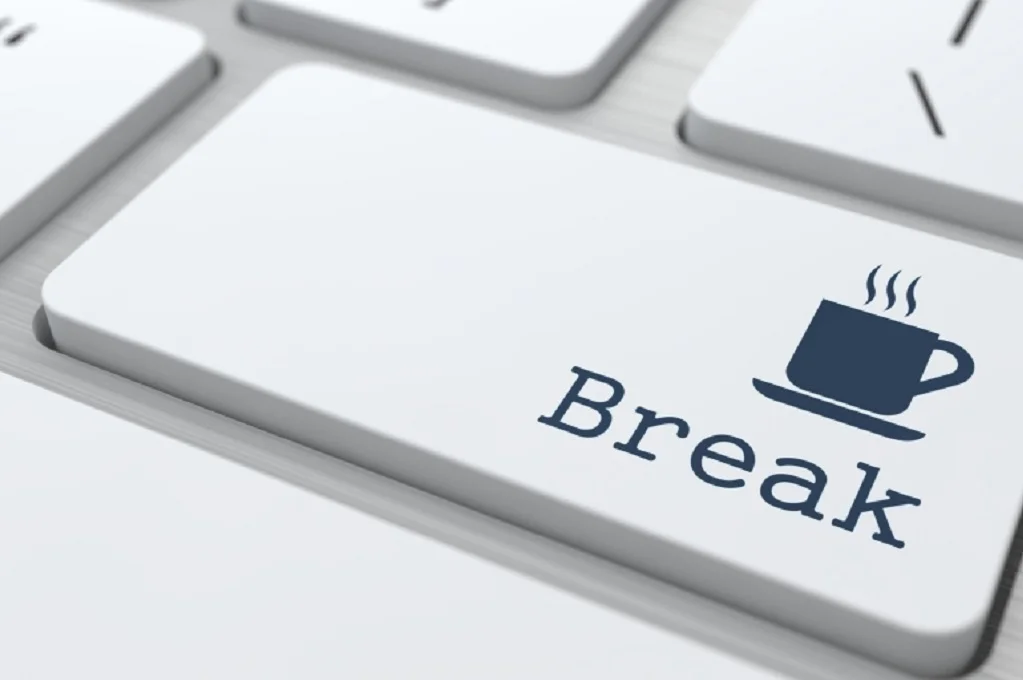Spending prolonged periods in front of a computer becomes counterproductive and can increase your risk of developing a number of short term and long term health problems. People who do continuous, intensive work on a computer can burn out both physically, mentally and suffer from computer fatigue, headaches, upper limb musculature injuries (e.g., carpal tunnel syndrome), and back pain.
Knowing how and why you should take breaks is especially important for office workers who rely on computers daily. Businesses should remind and encourage their employees to take frequent computer breaks.
Look away from your computer
Having blurred vision, headaches, and watery eyes are signs of computer fatigue and that you are putting too much strain on your eyes. By spending too long at a computer screen can cause you to blink less often and expose more of the eye surface to air. It is recommended that every 15 minutes, briefly look away from the computer screen for a minute or two to a more distant scene, preferably something more than 20 feet away. This will allow the muscles inside the eye to relax and help prevent eye fatigue. Because you are blinking less frequently your eyes start to dry and become itchy. Every now and then try and blink your eyes rapidly for a few seconds. This refreshes the tear film and clears dust from the eye surface.
Take a short breaks
It is important to take short breaks for a multitude of reasons outlined in this tech tip. There are 2 types of breaks that are necessary for your well being and to prevent computer fatigue. The first being micro-breaks. Micro-breaks are typically less than two minutes long and perfect to do between small bursts of typing and deep concentration. Most people type in short bursts rather than continuously over long periods. Between these short bursts of activity, rest your hands in a relaxed, flat, straight posture. Though micro-breaks are short, you can stretch, stand up, move around, or do a different work task (such as make a phone call). A micro-break isn’t necessarily a break from work, but it’s a break from using a set of muscles and resting your eyes by focusing on an object other than a screen.
The second type of break is commonly called a rest break. Rests breaks should be taken every 30 to 60 minutes. During this break, stand up, move around, and do something else. Get a beverage, chat to a coworker, or just take a lap around the office. This allows you to rest and exercise different muscles, and you will feel less tired. Friends, colleagues, and family are useful diversions when working. They give you the odd bit of news or gossip and can be a great distraction from looking at your screen for too long. It’s always beneficial to have strong relationships around the office so here’s a good chance to take this time and get around and visit some of your peers. Don’t go overboard though and ensure your breaks don’t go too long
Do Some Stretching
Sitting at a computer too long promotes bad posture and a lot of office employees will suffer from neck, shoulder and back problems. Muscles throughout your musculature system fatigue after too much repetitive use. To prevent both short and long term damage to your muscles, take a break every 45 minutes or so to stretch your muscles. It is definitely important to stretch muscles that you are repetitively using such as your arms, wrists, neck and shoulders but sometimes this is not enough. You also need to get some blood flowing through your body so getting up out of your desk and doing a fast walk or an activity that will stimulate your muscles is a better option.
Not only do you need to do musculature stretching but its a good idea to do some breathing exercises. Simple breathing exercises can help you detox your mind and eyes from incessant screen use. Shut your eyes and try alternate nostril breathing… Close your right nostril, breathe in from the left, then close your left nostril, and breathe out from the right… Now alternate it, and you have completed one cycle. Do as many cycles as you need to feel lighter and stress free.
Make a Schedule
While most people will agree that it’s important to take breaks from the computer, few do it often enough and suffer computer fatigue. To make sure you’re getting enough rest, we recommend making a schedule to stick to for a few weeks. Make it a habit to get away from the screen, and you’ll be less likely to burn out in the future.

